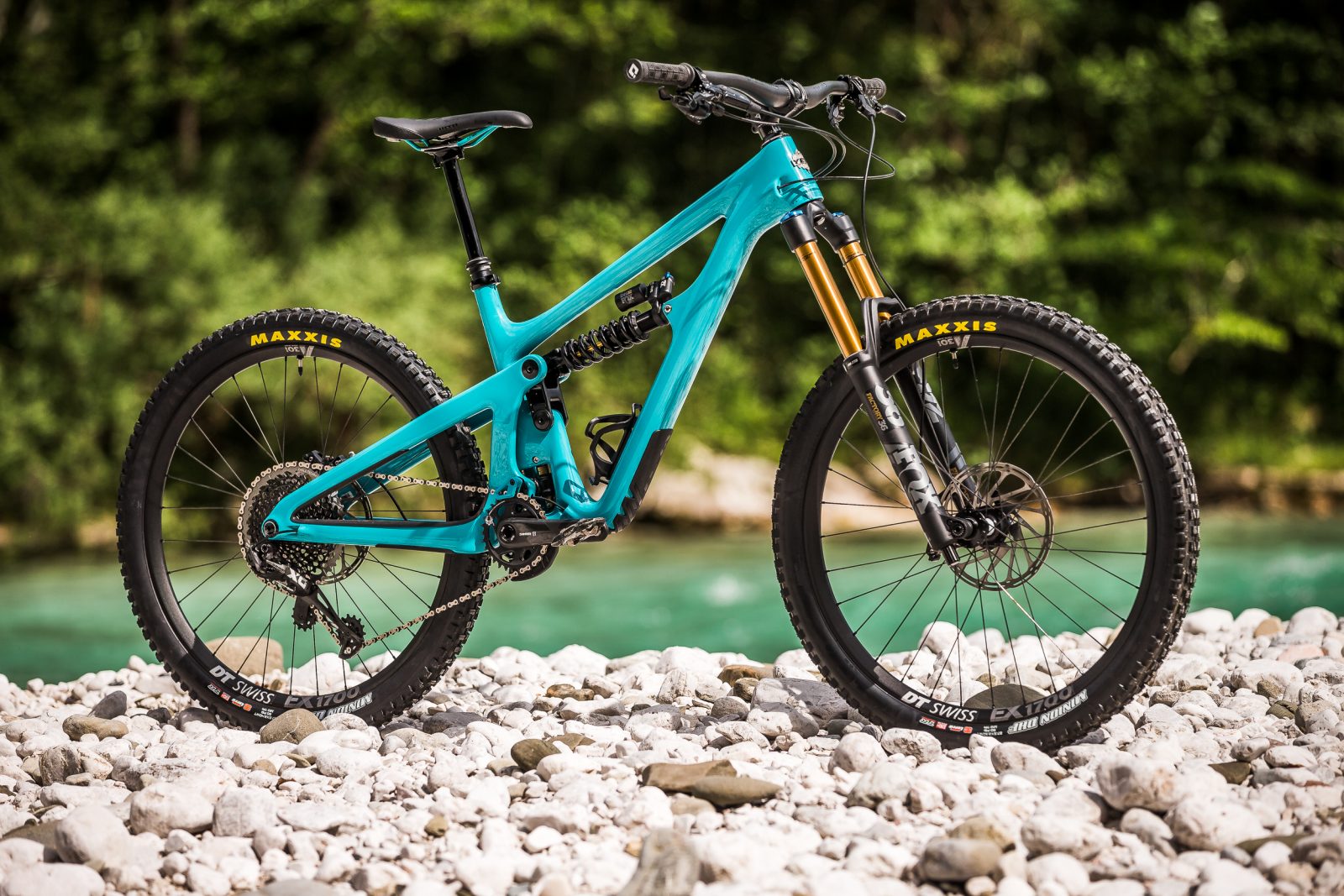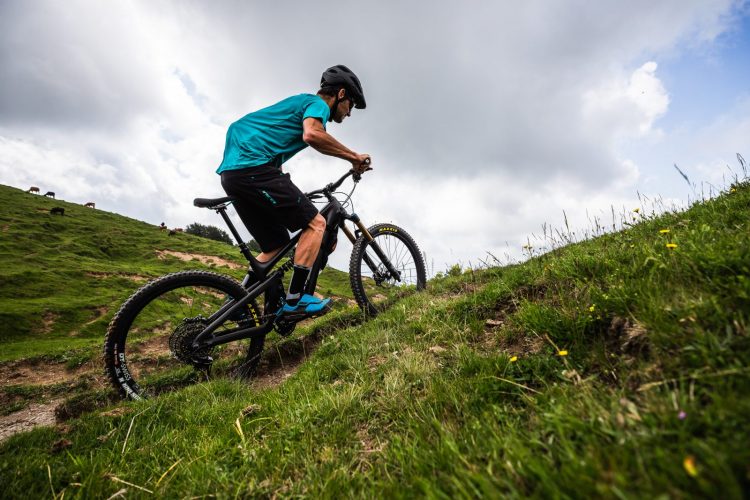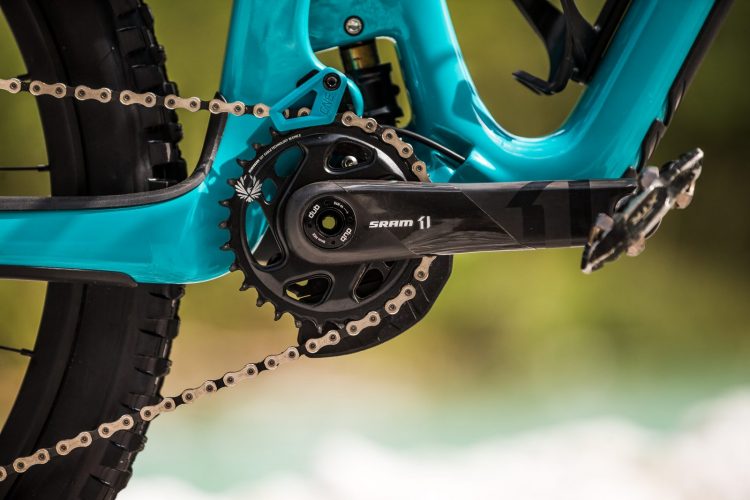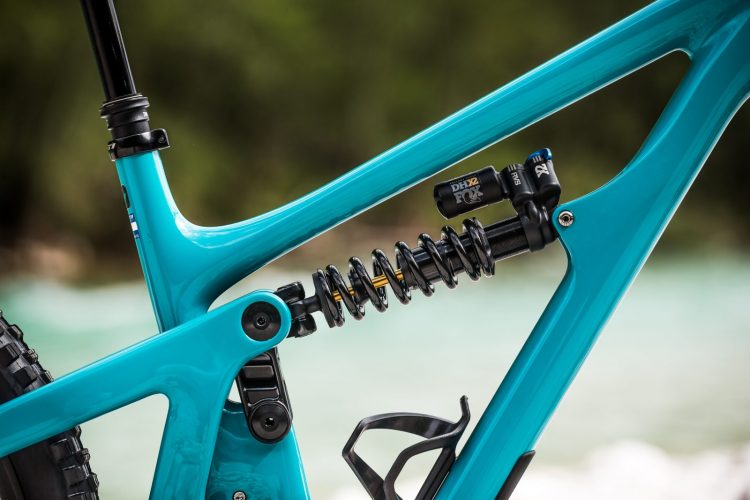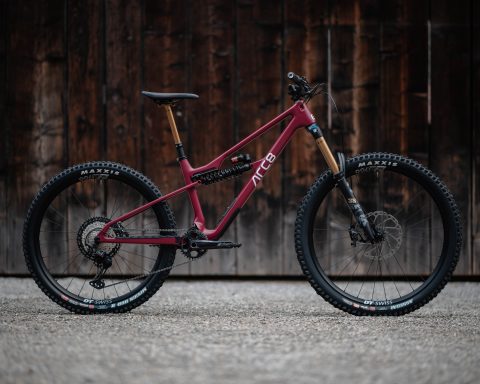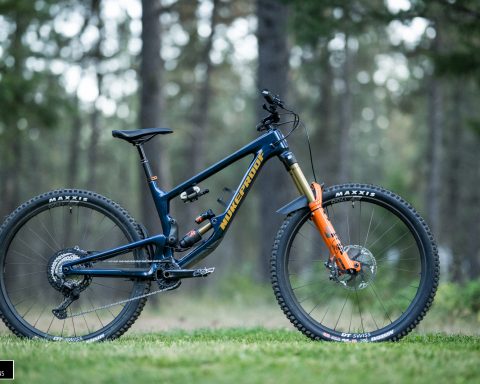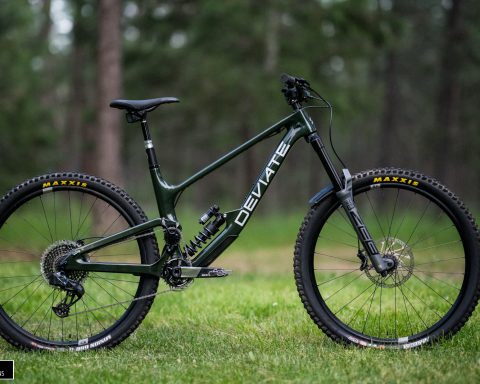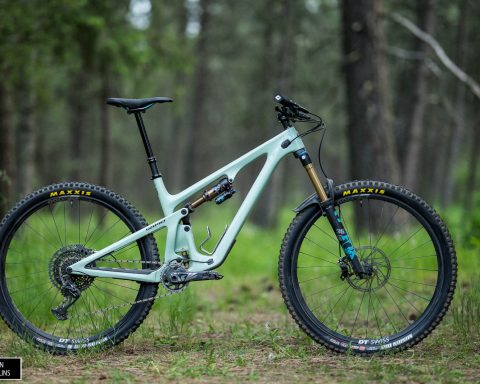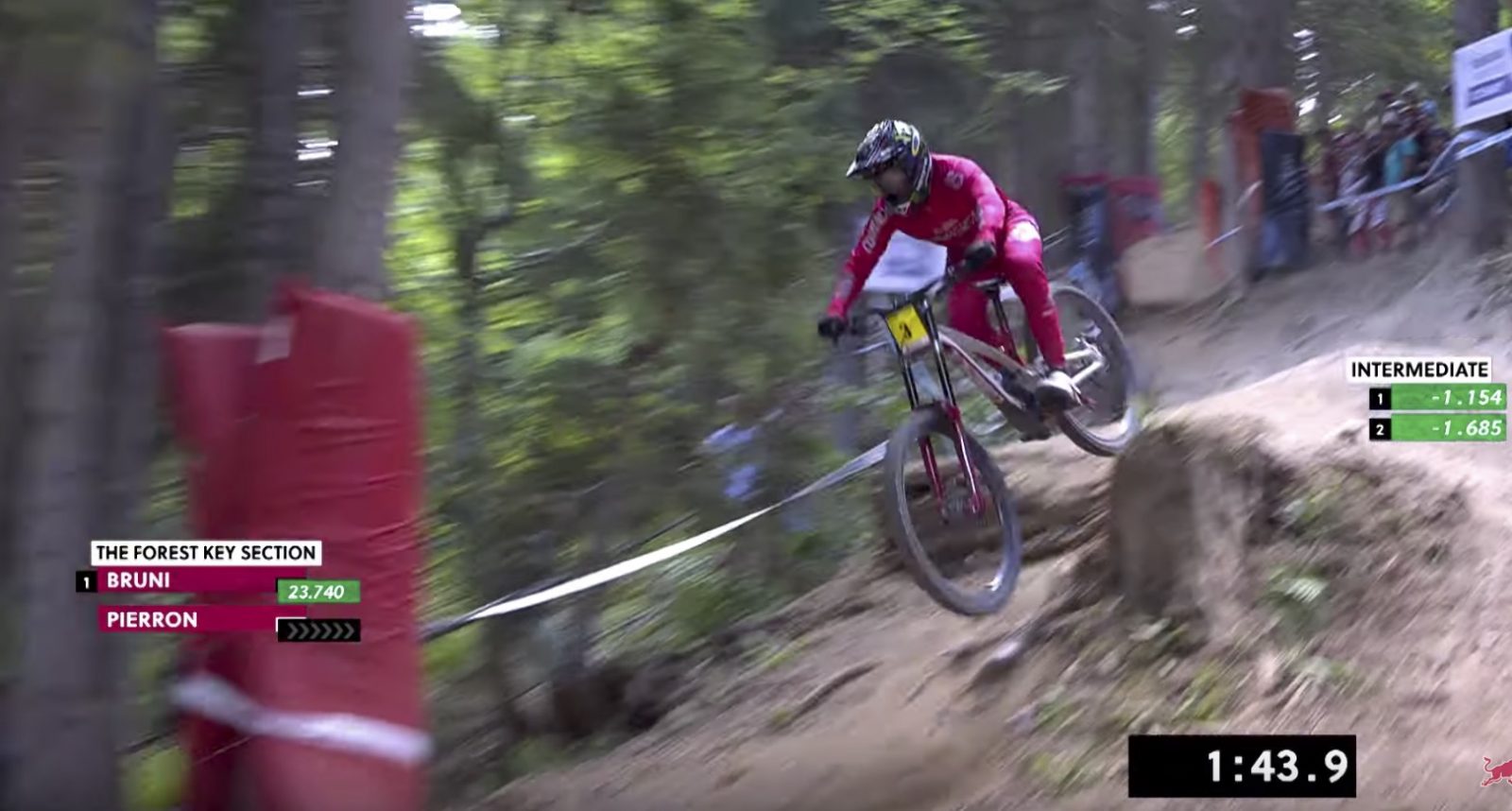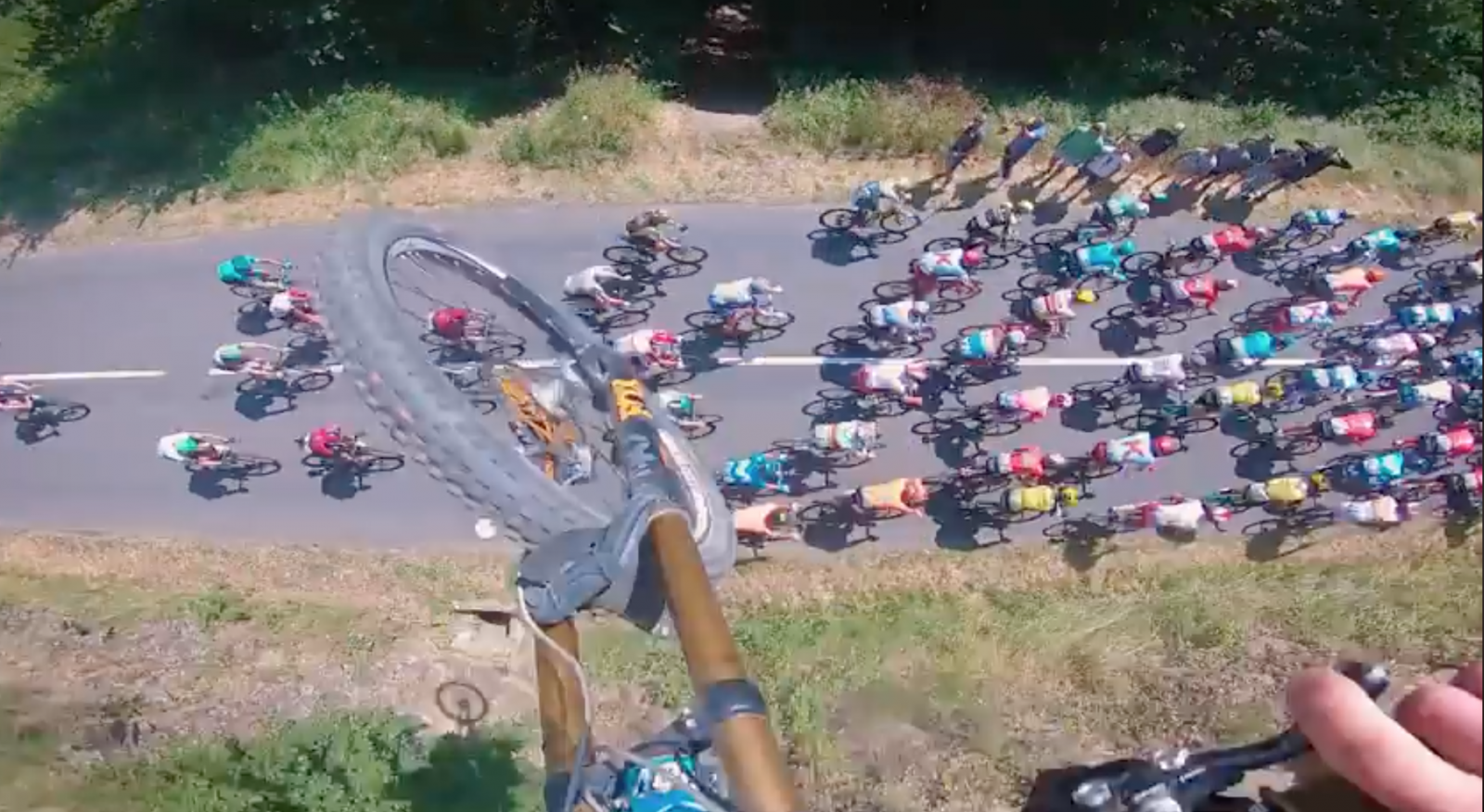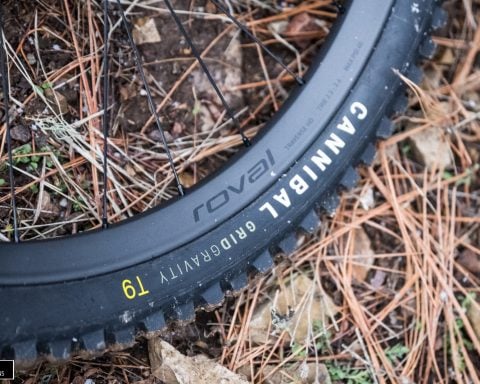Today Yeti presents the SB165, an enduro bike with 27.5 “wheels and, as the name implies, 165mm of rear travel combined with a 180mm travel fork. The Colorado brand defines it as a “rip bike“, that is designed to be agile and easy to pump on obstacles, with a nod to usage in the bike park. The suspension system is the tried and true Switch Infinity. During the presentation in Bovec, Slovenia, I got to talk with the product manager and engineer responsible for kinematics. Here are all the details of SB165:

As mentioned in the video, the SB165 is designed for use with a coil sprung shock absorber. The rear travel is in fact very progressive, precisely to offset the intrinsic linearity of the spring. Of all of the Yetis so far, this is the most progressive of the bunch…
Geometry
No compromise: very slack head angle, steep saddle angle, very short fork offset (37mm), very long reach.
Riding the Matadown trails with the SB165
I was able to try the SB165 for a whole day on the paths of the Matadown, on the Monte Maggiore or Matajur if you prefer, on the border between Slovenia and Italy. To cut to the chase, it’s worth noting that I pedaled for about 700 meters uphill, with the final part being rather technical. I myself was very skeptical about the climbing performance of such a bike, but I changed my mind once I reached the top: I was always in the saddle without problems. I had already appreciated the Switch Infinity in the past, in the case of the SB165, however, I was really amazed when the back end was high in travel and how the coil spring (without locking the compression via lever) helped to mitigate roughness and offer traction despite the “small” wheels.
Not only that, the front is easy to keep glued down to the ground, without having to assume less than ideal positions at the tip of the saddle. This is largely due to the 77° saddle angle, without a doubt. The fact that a 180mm fork is mounted in combination with a 165mm shock is well explained by the engineers in the video, and it has always been one of the features that I liked about Yeti, because personally I find that there is no need for the rear travel to be the exact same range as the fork, and their reason is well explained technically.
In any case, this is NOT a trail bike. It climbs very well given the type of bike, but I do not recommend it to anyone who wants to go out long epic climbs looking for an all arounder. Within Yeti’s offerings, you’re better off with an SB150 or 130, with 29-inch wheels, less extreme geometry and more limited travel.
The strong points of the SB165 are seen the descents, especially the rowdier things get. The more you let it the bike go, the more you enjoy it, as you might expect with a 63.5° head angle. I tried a size L, with a reach of 480mm, for me I am 179cm tall. It may seem over the top, yet I found myself at ease. The 150mm travel seatpost was practically slammed, which is logical with my inseam (saddle – bottom bracket) of 76cm
This is a bike that requires a very active level of input, that is you need to keep the weight well forward over the handlebars, otherwise the handling of the bike suffers immediately.
The suspension department is as good as it gets. Beyond the Fox 36 Grip2, which I also regularly use on other bikes, once again the Infinity Switch has proven to be one of those suspension systems that works well in every situation without the need for help from various platforms. As already mentioned discussing the climbing attributes, it always sits very high in its travel and, in this case, it has a progressiveness that does not make you regret an air shock, because it is quite difficult to reach the end of the travel. On the matter of durability, I had a Yeti with the “old” Switch Infinity, less protected than the current one, for almost a year, without ever having a problem.
The trail of the Matadown is rather fast and with a few twisty stretches, which is why I can’t say much about how it behaves on tight turns. In any case, in the few slow and technical turns, I managed to set my line well, also thanks to the 27.5 “wheels. I hadn’t been riding 27.5″ for a long time, since I really like traction and the versatility on offer from modern 29” bikes, but I can say that the smaller wheels still have a reason to exist for a type of bike like this, devoted more to fun than to conquering uphill KOMs.
Specs and prices
For the SB165 Yeti offers up two types of carbon frames, the Turq and the C. The second is slightly heavier (+220 grams in size M) but cheaper.
Frame Details
The heart of the Infinity Switch system.
Space in the rear with a 2.4″ Maxxis Minion DHR II.
One Up Components Chain Guide.
Internal cable routing with sleeved guides.
Coil sprun rear shock. Here you can still save some grams by opting for the orange Fox spring, which Yeti does not spec as OEM to make sure that there isn’t excessive expense if the customer wants one of another rating.
The hardware for the Infinity Switch is the same on all Yetis, apart from the link.
Brake caliper connection.
Long Reach, short stem, very short fork offset.
Not to be misunderstood: this is a Yeti SB165.
Bash guard. It makes sense on a bike so devoted to descents.
I never once touched that lever for compression adjustment on the fly. It always remained open, even uphill.
There is space for a water bottle. Tested in person.
For those who missed it, here is the interview with the two owners of Yeti, during the press presentation in Slovenia:


